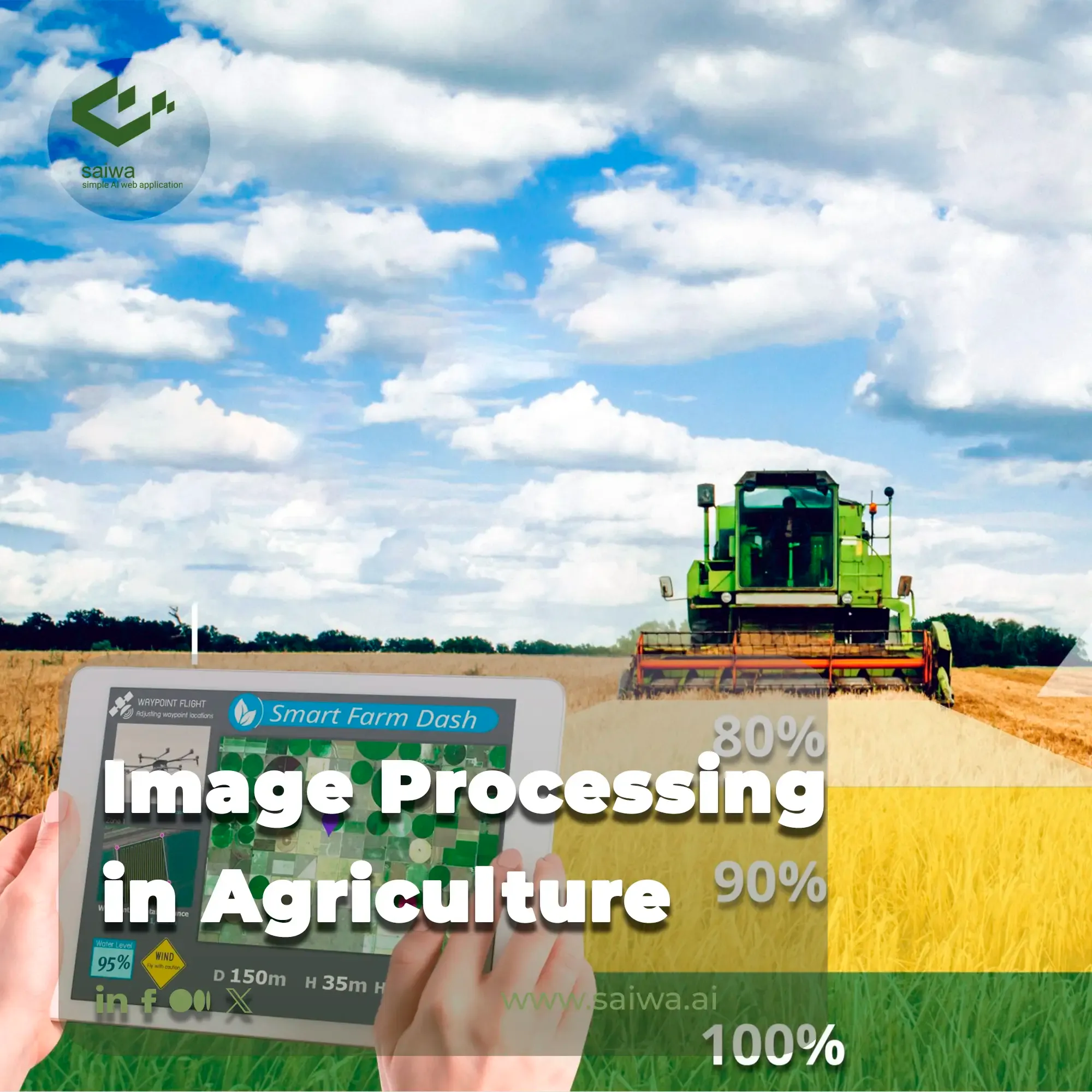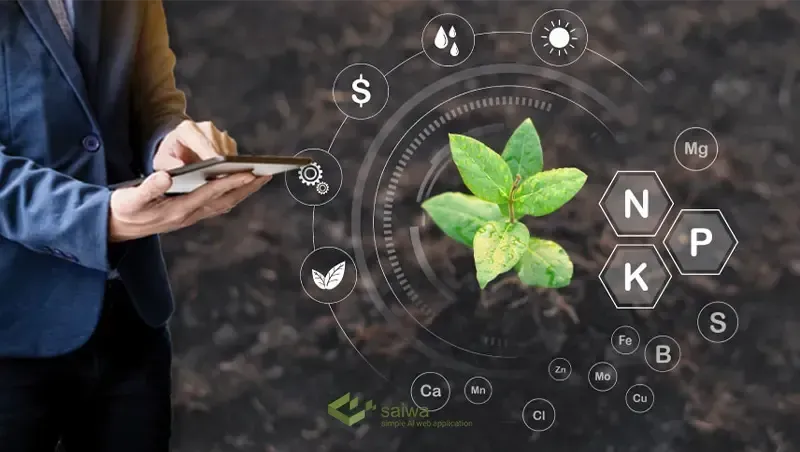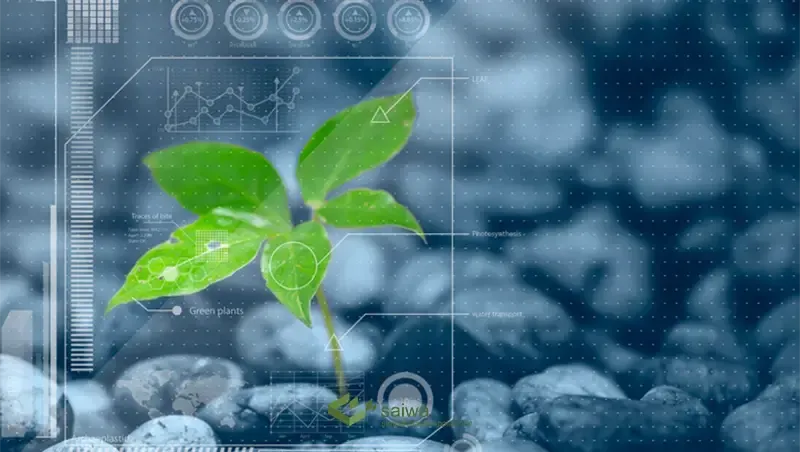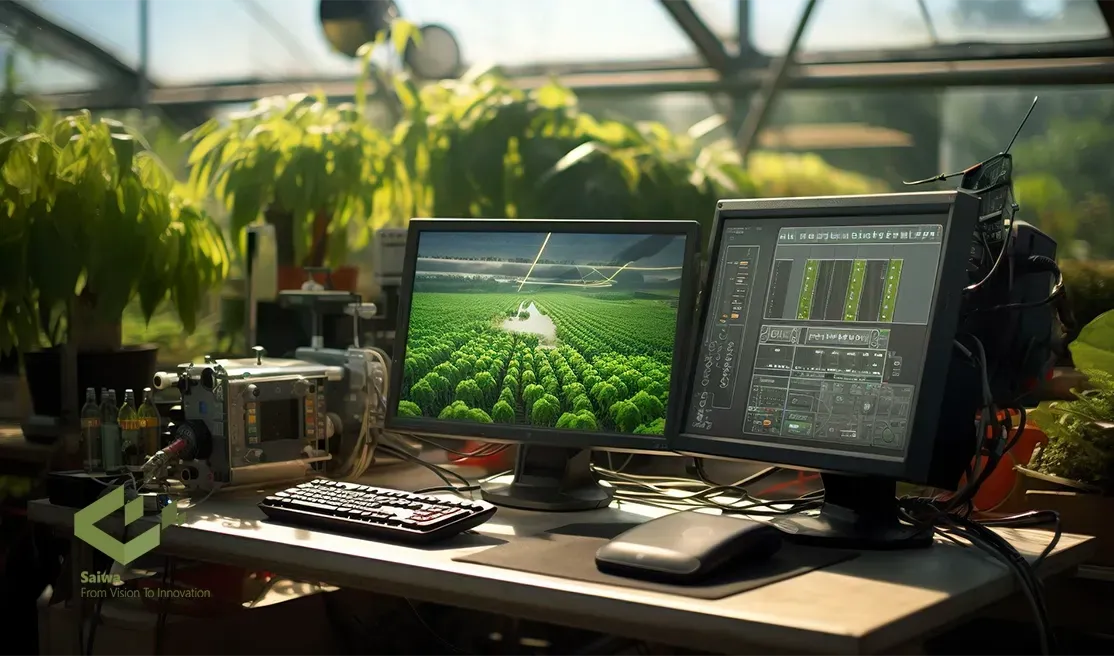Application of Image Processing in Agriculture

In one recent review, researchers found that image recognition technologies are already being applied in smart agriculture to detect crop diseases, identify plant species and estimate yields.
Traditional manual crop monitoring methods struggle with slower speed, limited coverage, and inconsistent accuracy especially when thousands of hectares need frequent checks.
Because image processing enables real-time visual analysis of crops from aerial drone imagery to ground-level cameras it matters for improving yield, reducing waste, and optimising inputs like fertiliser and pesticide.
In this blog you will discover how image processing is applied in agriculture: scanning techniques (multispectral, thermal, proximate imaging), preprocessing steps, machine-learning-driven analytics, key applications (disease detection, yield prediction, nutrient monitoring) and the challenges and future directions of deploying this technology on farms.
What is Image Processing in Agriculture?
Image processing in agriculture refers to the analysis of images captured on farms to gather intelligence on crops, soil, pests, nutrition status and surrounding conditions. Data sources include aerial imagery from satellites and drones as well as ground-level photography from handheld devices and stationary systems mounted on tractors or infrastructure.
Visual data provides unique real-time insights not attainable from numeric soil probe measurements or moisture sensors alone. When processed through specialized algorithms, these images can reveal crop stress, tissue damage, drainage issues, emergence rates and a wealth of other actionable agricultural insights at the speed required for timely interventions. As camera and sensor resolution continue improving alongside advances in computer vision and machine learning, image processing is poised to become an indispensable tool for digital agriculture.
Read Also: Practical Application & Future of AI in Agriculture
Applications in Crop Monitoring and Management
Image processing in agriculture enables several key applications to enhance crop monitoring and data-driven management:
Plant Health Assessment
Visual symptoms in imagery reveal problems like drought stress, pest damage, and nutritional deficiencies before they escalate. Subtle changes in leaf color, texture, size, and shape can be indicators. Measuring vegetation indices like NDVI shows overall plant vigor. Time series analysis detects progressive deterioration. This enables preventative treatment.
Disease and Pest Detection
Bacterial, fungal, and viral crop Disease Detection manifest visibly on leaves, stems, and fruits well before entering advanced stages. Identifying characteristic patterns in images allows early treatment. The same applies to the detection of insects and weeds.
Yield Prediction
As crops develop, algorithms can analyze a number of plants, flowering rates, fruit counts and vegetation density in images to forecast yields for the season. This enables optimized harvest planning and marketing.
Overall, image processing in agriculture generates granular insights to optimize crop management decisions and improve productivity.
Read Also: The Rise of Automated Fruit Sorting Using Image Processing

Image Data Capture
Multiple imaging modalities are used in agricultural image processing:
Satellite Imagery: Public and commercial satellite networks like Landsat provide frequent multi-spectral global image capture ideal for broad-scale crop monitoring, measuring vegetative indices, and identifying field issues.
Aerial Drones: Drones with specialized cameras are used at regular intervals to capture detailed crop imagery for analyzing plant health patterns, growth, and yield outlook across fields.
Proximal Sensing: Mounted systems on tractors or irrigation booms using RGB and multi-spectral cameras gather high-resolution imagery of each crop row to detect localized issues and growth variability.
Handheld/Portable: Agronomists use smartphones and near-range cameras for portable imaging to quickly scout fields for problems, document conditions, and monitor individual plants.
Multispectral: Sensors capturing wavelengths beyond visible light like near-infrared provide specialized imagery revealing plant problems before visible symptoms emerge based on light interaction with foliage.
Thermal: Infrared thermal imaging indicates water stress and can identify over-watering.
Fluorescence: Chlorophyll fluorescence imaging measures photosynthetic efficiency.
Hyper-spectral: Hundreds of narrow bands reveal detailed chemical and biological composition to plant disease identification and nutrition status.
Advances in sensor technology and imaging from multiple perspectives provide rich, complementary visual data on crops for computer analysis.
Preprocessing Steps
To read agricultural images for effective analysis and algorithm training, key preprocessing steps are required:
Geo-registration
Geo-registration aligns images with real-world coordinates using optical camera models or referenced landmarks. This mapping enables the integration of multiple images taken over time or from different platforms, allowing precise field tracking and supporting the creation of prescription maps for agricultural equipment.
However, this process faces several challenges:
- Distortions caused by camera angles and lens curvature.
- Variations in lighting conditions across image sets.
- Localization errors from drones or satellites.
To overcome these, advanced computer vision algorithms are applied to match image features or textures, resulting in robust and accurate geo-registration.
Noise Filtering, Super-Resolution, and Deblurring
Raw images often contain noise or blur from sensors, low light, or platform movement. Processing steps improve clarity and detail:
- Noise filtering: Removes sensor artifacts and random pixel errors.
- Super-resolution: Merges multiple low-res images for sharper results.
- Deblurring: Corrects motion blur from drones or wind.
These enhancements deliver cleaner data for reliable analysis.
Normalizing Multi-seasonal Images
Seasonal changes in lighting, soil, and plant growth make long-term comparison difficult. Normalization techniques address this by creating consistent visual conditions.
- Approach: Color and texture adjustments unify image appearance across seasons.
- Outcome: Enables stable feature extraction and comparison of true crop changes.
- Research trend: Use of style transfer and domain adaptation to handle dataset shifts over time.
Image Analysis Applications in Agriculture
Key applications of agricultural image analysis include:
Detecting Diseased Leaf Patterns for Early Intervention
Advanced computer vision techniques enable automated, large-scale disease detection in crops through image recognition of visual symptoms on leaves, stems, and fruit. Machine learning algorithms can be trained on labeled datasets of imagery containing healthy plants vs various diseases. The models learn subtle visual cues like leaf spots, wilting, chlorosis, or patterns of decay to accurately classify crop health status.
Real-time disease detection from live image feeds or high-throughput processing of batches of field images provides an early warning to growers. This permits applying timely targeted fungicide or bacterial treatments before widespread infection occurs. Geolocating visual detections also facilitates the generating of disease distribution maps to analyze spread patterns. Such precision application saves costs and limits environmental impacts versus broad spectrum spraying of entire fields.
Assessing Crop Density, Spacing, and Size Distributions
Analyzing overhead crop images with smoothing, filtering, semantic segmentation, and object counting algorithms generates key plant morphological and population data. This includes stand density (plants per area), spacing variability, and relative size distributions.
Tracking growth over time can indicate gaps requiring replanting or reseeding for optimal yields. Size variability across plants may reflect non-uniform germination, nutrient levels, or moisture. This enables corrective actions like tailored water, fertilizer, or pesticides.
Identification of Nutrient Deficiencies
Characterizing color changes in foliage with computer vision reveals the onset of macro and micronutrient deficiencies before visible stunting or wilting. Machine learning classification models distinguish healthy spectral signatures from deviations indicating low nitrogen (pale greens), iron (yellows) or sulfur (purples).
Connecting color anomalies with soil properties, fertilization regimes, and yield impacts allows precision nutrient prescriptions. Targeted in-season fertilizer applications or modified programs for successive years then address deficiencies observed in imagery before yields suffer.
Read Also: An Over View Applications of Computer Vision in Agriculture

The Challenges of Using Image Processing for Agriculture
Image processing for agriculture can revolutionize crop management. However, effective implementation of such technology comes with its own difficulties. Let us now look at some of the main problems that are related to the use of image processing for agriculture:
Data Quality Demands
High-quality data is crucial for precise image processing for agriculture. Factors like weather variations, pests, and diseases can significantly impact the visual characteristics of crops, making it difficult for image processing for agriculture algorithms to deliver consistent results. This requires strong image capture methods, correct data pre-processing procedures, and possibly even the implementation of multispectral imaging to address these differences and guarantee accurate crop evaluation.
Limited Training Data Availability
Limited training data availability for specific crops, diseases, or environmental conditions in agriculture can further restrict the generalizability of image processing for agriculture models. This necessitates the development of strategies for data augmentation and transfer learning techniques to overcome this hurdle and ensure image processing for agriculture delivers its full potential.
Integration with Existing Farm Management Systems
Integrating image processing data seamlessly with existing farm management systems is essential for optimizing workflows and decision-making. Challenges arise in ensuring compatibility and efficient data exchange between these systems. Additionally, standardizing data formats across different platforms can further streamline the integration process and unlock the full potential of image processing for agriculture.
Advanced Machine Learning Techniques
Recent advances in artificial intelligence and data science have opened up new possibilities for more sophisticated agricultural image processing. Deep learning neural network models like CNNs can be trained on large annotated image datasets to automatically identify and classify a wide range of crop species and cultivars from visual appearance. Recurrent neural networks analyze multi-temporal images to identify changes in crops over time and predict future states. Deep learning algorithms classify every pixel in images into categories like foliage, fruits, or background to provide richer details.
Combining image analysis data like stand counts and vegetation indices with climate records in machine learning models leads to improved yield prediction accuracy. Algorithms learn normal healthy crop appearance and then automatically flag anomalies in new images that may indicate disease, weeds, or nutrient issues.
AI can extract information on relationships between visual crop symptoms, location, soil conditions, treatments applied, and outcomes to gain agronomic insights. Expert systems can recommend management interventions to farmers based on image analysis and broader field data. Computer vision guides agricultural robots to perform tasks like weed removal and selective harvest based on crop image analysis.
Read Also: The Impact of Machine Learning in Agriculture

Security and Privacy in Agriculture Image Processing
Agriculture image processing is revolutionizing the way farmers manage their fields. This data is crucial for optimizing farm management, but it's also sensitive.
Security Threats
Agricultural image processing systems handle sensitive data, making them potential targets for cyberattacks. Unauthorized access could lead to data theft or disruption of farming operations.
- Risks: Hackers might manipulate planting schedules, steal operational data, or exploit financial information.
- Solution: Implementing end-to-end security from image capture to analysis, prevents tampering and ensures system integrity.
Privacy Concerns
High-resolution imagery can expose details about crops, planting patterns, and farm layouts, raising serious privacy issues. Farmers need assurance that their data is protected and used responsibly.
Mitigation:
- Data anonymization removes identifiable information.
- Access controls limit visibility to authorized users only.
- Transparency ensures farmers understand how their data is stored and shared.
Building trust through clear communication is vital for widespread technology adoption.
Building a Secure Future
Security and privacy form the foundation of trust in agricultural technology. Stakeholders must adopt strong encryption, transparent data policies, and ethical handling standards.
Outcome:
- Strengthened farmer confidence and participation.
- Sustainable and ethical development of agricultural imaging systems.
By safeguarding the “eyes in the field,” this technology empowers farmers with insights while protecting their most valuable resource data.
Post-Harvest Quality Assessment: Ensuring Excellence with Image Processing
The journey of leveraging image processing in agriculture doesn't conclude at harvest; it continues to add significant value in post-harvest operations, particularly in the critical task of fruit and vegetable grading. Maintaining high quality standards for the market demands consistent and accurate assessment, an area where automated visual inspection systems are making remarkable strides.
Moving beyond the limitations of subjective and labor-intensive manual sorting, these systems employ sophisticated cameras and computer vision algorithms. As produce travels along processing lines, image processing in agriculture techniques analyze various quality attributes with speed and precision. This includes:
Objective Grading: Assessing characteristics like size, shape, and volume far more consistently than human inspectors.
Color and Ripeness Analysis: Utilizing spectral data within images to accurately determine maturity levels, crucial for shelf-life and consumer appeal.
Defect Detection: The identification of surface imperfections, including blemishes, bruises, cuts, and signs of disease that might affect marketability.
By integrating image processing in agriculture into grading lines, agribusinesses can ensure uniform quality, significantly reduce sorting errors, minimize waste, and optimize packing efficiency. This application underscores how intelligent visual analysis is enhancing quality control and efficiency throughout the entire agricultural value chain, from field to final product.
Combining Image Processing with Internet of Things (IoT) for Smarter Farms
The integration of image processing in agriculture with the Internet of Things (IoT) is paving the way for the development of more intelligent and efficient farming practices. By combining these technologies, farmers can enhance their decision-making processes, improve crop yields, and reduce waste. Here’s how this synergy benefits modern farming:
Real-time Data Collection: IoT devices, such as sensors and drones, are capable of collecting vast quantities of data, including environmental conditions and crop health. When integrated with image processing in agriculture, this data can be analyzed to detect crop stress, pest infestations, and nutrient deficiencies instantly.
Automated Monitoring: Internet of Things (IoT) sensors placed throughout the farm, alongside cameras and drones, provide continuous monitoring. Image processing algorithms analyze these images, giving farmers a real-time view of their fields. This helps in early detection of potential problems, reducing the need for manual checks.
Data-Driven Decisions: The integration of the Internet of Things (IoT) and image processing in agriculture enables farmers to make data-driven decisions based on accurate, up-to-date information. This enables optimized irrigation, pest control, and fertilization schedules, which can significantly boost crop production and sustainability.
Predictive Analytics: The integration of these technologies can also enable predictive analytics. By analyzing patterns in the visual data collected over time, farmers can forecast crop yields and plan resources more effectively.
Conclusion
To sum up, image processing has moved from promising pilots to a core component of digital agriculture. It supports plant-health assessment, disease and pest detection, yield forecasting, nutrient mapping and more by turning raw images into actionable insights.
From the perspective of a crop-technology strategist, I believe the next frontier lies in seamlessly integrating farm imagery with sensor and IoT data, improving algorithm robustness under field variability, and delivering actionable intelligence directly to farmers. Only then will image processing fully translate into higher productivity, lower environmental footprint and smarter, sustainable farming.
Note: Some visuals on this blog post were generated using AI tools.
